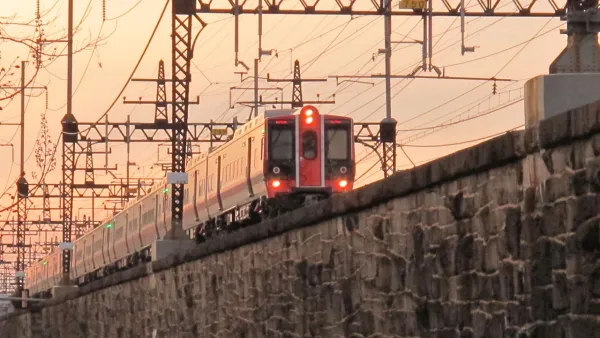As the new federal transportation bill, known as MAP-21, moves to the implementation stage, major finding decisions will ride on the nuances by which the U.S. DOT defines and measures "congestion," "roadway performance," and "cost effectiveness".
"Congress has done its job, such as it is, and passed a transportation bill. Now it's handed off the policymaking to U.S. DOT, which must issue a raft of rules, definitions, and guidance to accompany the new law, known as MAP-21."
Streetsblog asked economist Joe Cortright for his advice to DOT officials struggling to define congestion. His words of wisdom: "Don't make the mistake the Texas Transportation Institute makes."
"TTI's Urban Mobility Report, released every year, invariably gives top honors to places that have overbuilt road capacity. The institute measures congestion only by looking at the degree to which traffic slows down people's commutes. The problem with that, Cortright says, is that 'you end up rewarding places that encourage people to drive longer and longer distances, and then you look at those long distances that they're traveling, and say because they're moving at a relatively higher speed much of the time that they're driving, that the system is somehow performing better.'"
"Cost-effectiveness also can't be measured without examining what are known as 'externalities' -- the costs of driving that are passed on to the public. 'The existing gasoline tax doesn't even cover the maintenance on the highway system that we have now,' Cortright said. 'It doesn't reflect the economic losses to crashes, it doesn't reflect the economic externalities associated with the environmental effects of burning all this gasoline and putting carbon in the atmosphere, and it doesn't reflect the foreign policy and military costs of being so dependent on foreign oil.'"
"If I were U.S. DOT, I'd try to add in, in figuring cost-effectiveness, the cost of all those other subsidies to automobiles," he added.
Thanks to Tanya Snyder
FULL STORY: There’s a Lot Riding on U.S. DOT’s Definition of “Congestion”

Analysis: Cybertruck Fatality Rate Far Exceeds That of Ford Pinto
The Tesla Cybertruck was recalled seven times last year.

National Parks Layoffs Will Cause Communities to Lose Billions
Thousands of essential park workers were laid off this week, just before the busy spring break season.

Retro-silient?: America’s First “Eco-burb,” The Woodlands Turns 50
A master-planned community north of Houston offers lessons on green infrastructure and resilient design, but falls short of its founder’s lofty affordability and walkability goals.

Test News Post 1
This is a summary

Analysis: Cybertruck Fatality Rate Far Exceeds That of Ford Pinto
The Tesla Cybertruck was recalled seven times last year.

Test News Headline 46
Test for the image on the front page.
Urban Design for Planners 1: Software Tools
This six-course series explores essential urban design concepts using open source software and equips planners with the tools they need to participate fully in the urban design process.
Planning for Universal Design
Learn the tools for implementing Universal Design in planning regulations.
EMC Planning Group, Inc.
Planetizen
Planetizen
Mpact (formerly Rail~Volution)
Great Falls Development Authority, Inc.
HUDs Office of Policy Development and Research
NYU Wagner Graduate School of Public Service



























